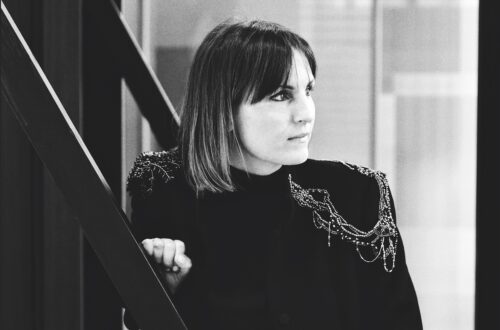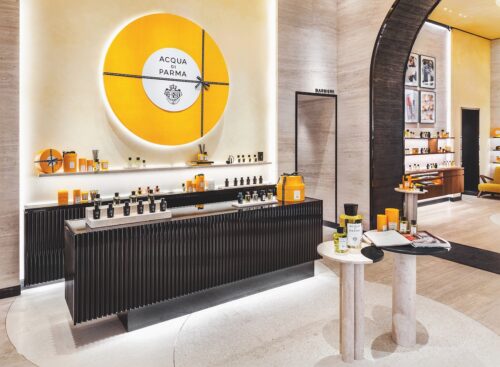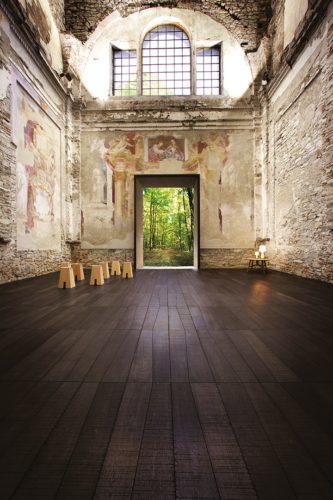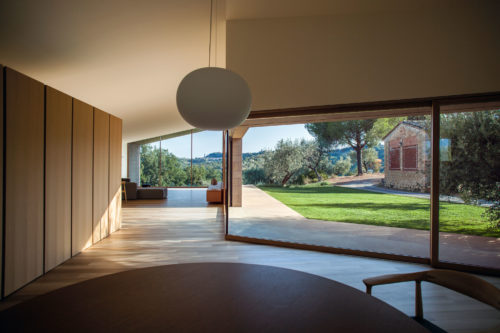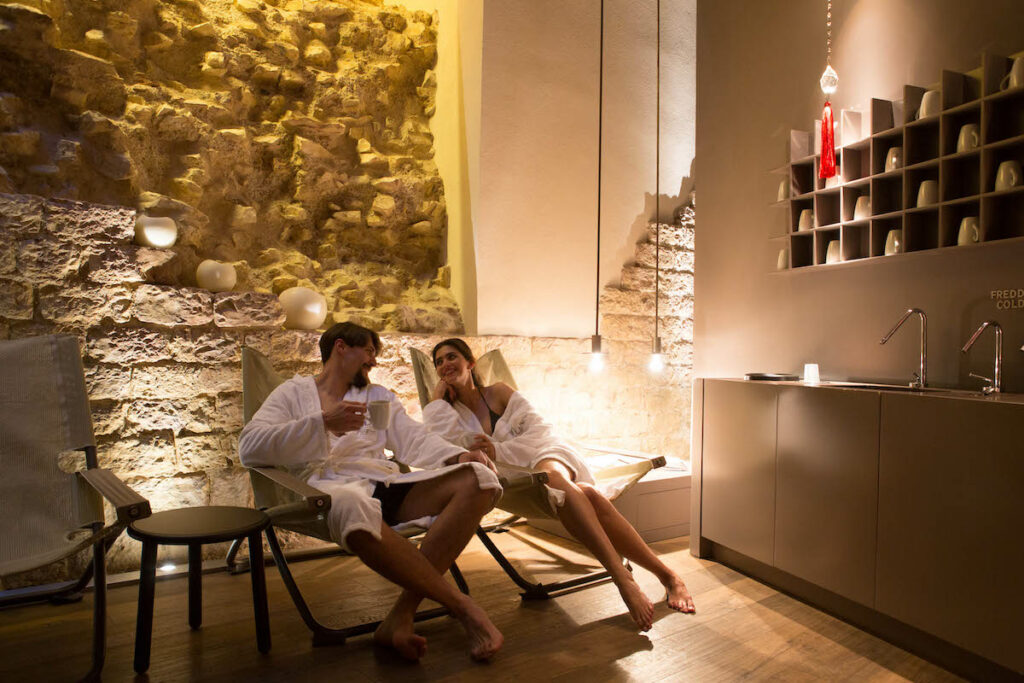
Historical sources date the origins of spa architecture to no less than the Neolithic period; after all, it was nature itself that gave shape to natural pools and caves. Let us not forget the spiritual passion of the Greeks and Romans for therapeutic immersion in temples of well-being, of which vestiges of memory and stone remain.
We must pay homage to the wisdom of our ancestors if, even today, we are devoted priests of the spa ritual and love to immerse ourselves in the amniotic fluid of pure well-being.
“Nature is a temple in which living pillars sometimes let confusing words escape; man passes through it, through forests of symbols, looking at him with familiar gazes. Similar to long echoes, blurring into a dark, deep unity – as vast as night and light – the scents, colours and sounds respond. Scents as fresh as children’s flesh, as sweet as the sound of the oboe, as green as prairies. And others corrupt, rich and triumphant, vast as the infinite things: amber, musk, benzoin and incense, singing the raptures of spirit and senses”.
Charles Baudelaire, The Flowers of Evil
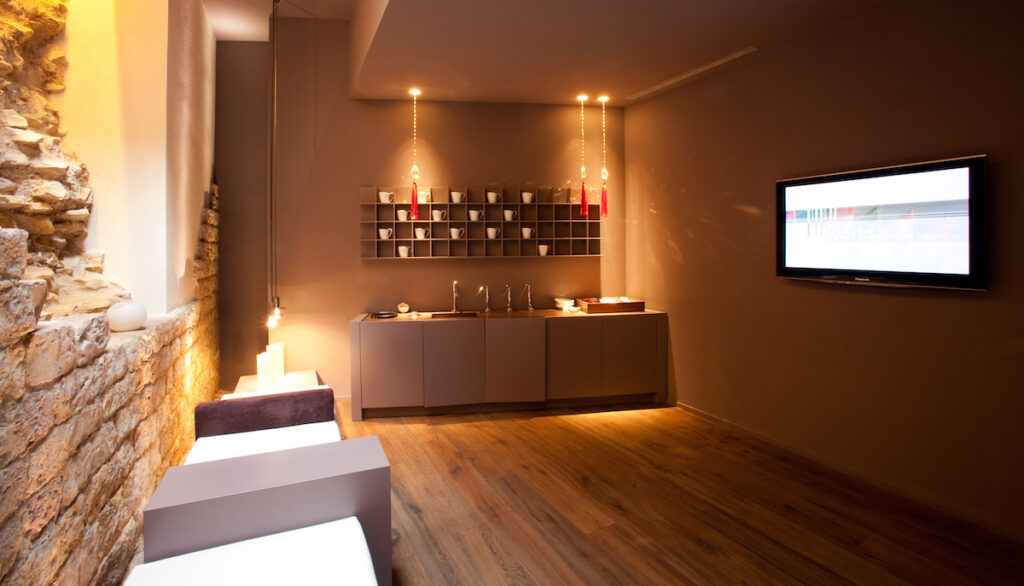
The question facing designers of all ages is that of ‘giving form to water’ or the ‘form of water’ as Italian writer Camilleri (the author of Montalbano) wrote. So dear architects: what is the container and material to contain and enclose liquid matter in a material volume? With respect for the place and the most precious element that exists in nature. Water is considered a sacred element in many religions, as it is the generator of life.
It was Thales of Miletus who decreed, following the most ancient philosophers, that water was the principle of all things: it plays a decisive role in the production of bodies; it makes nature fertile, nourishing plants and trees; and without its contribution, the earth, dried up, would remain sterile. Since the earliest times, man has recognised water as the source of all life.
What materials are the passing notes that harmonise the architectural frame with its content? Nothing better than materials that carry the same values of beauty, well-being and health, including, unfailingly, wood. In addition to stone, marble and mosaics that act as a bridgehead between East and West, between the tradition of Turkish hammams and the latest generation, ultra-technological spas with state-of-the-art gym and fitness centres.
READ ALSO – Waldorf Astoria in Jerusalem opens its doors to the concept of architectural humanity
Dating back to 1741 is the Cağaloğlu: one of the last hammams of the Ottoman Empire, in a capital city with Istanbul numbering over 300. A living testimony to the thousand-year-old tradition of Turkish baths, it is enriched with some architectural innovations inspired by the Ottoman Baroque style.
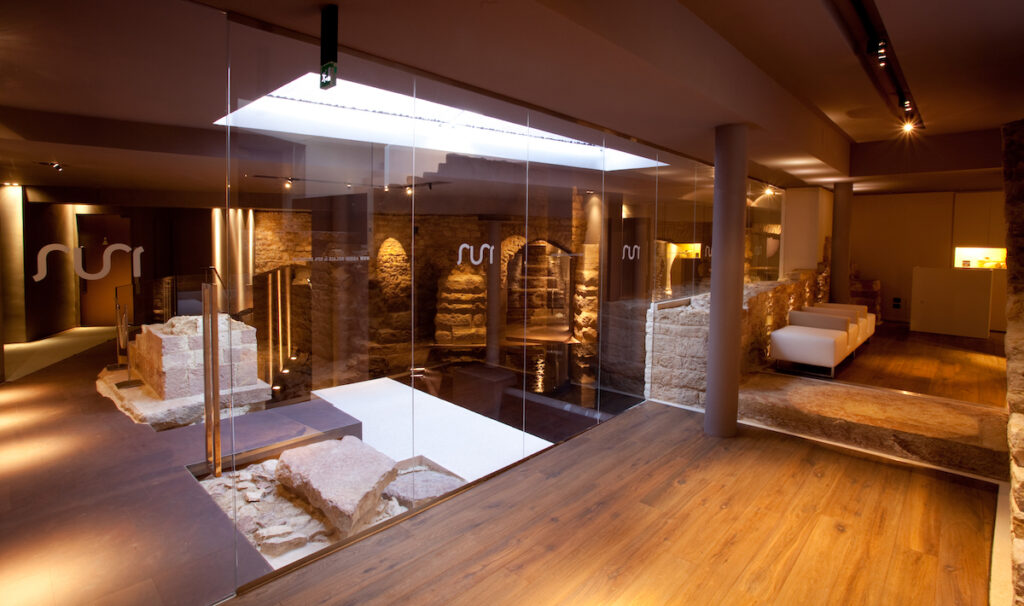
A journey across centuries and continents takes us to Assisi, the spiritual refuge and home of St. Francis with his laudation to Sister Water (among the various elements mentioned in his Canticle of the Creatures). A renovated ancient monastery becomes a place of hospitality and a treasure chest of wellness and hydrotherapy: Nun di Assisi digs deep into the nakedness of stone and wood with daring architectural solutions for a complete sensory experience. A project that rewrites the paradigm of luxury, here hidden and silent, to rediscover a slow rhythm that flows drop by drop. It was in the year 1275, when St. Catherine’s fortress was originally built to house a group of Benedictine nuns, later Cistercian nuns and affiliates of the confraternity of Ss. Antonio and Giacomo: until 1900 when the building was used, alas, as a prison.
An authentic renovation project has removed the bars to let in the light, and from the interstices of the stone façade one can guess the beauty held within. A construction marked by the passage of time and the signs of history.
Few Spas in Italy have crossed paths with architecture in the course of their history, an exception being the Berzieri thermal baths, bathed by the waters of Salsomaggiore. The eponymous palace, with its Art Deco façade made entirely of ceramics, is the only model of thermal Art Deco registered in the Cultural Heritage of Emilia Romagna. The Liberty style can also be breathed inside with a decorative apparatus inspired by Egyptian, Turkish and Parisian art, large glass domes and square columns.
Returning to the contemporary, the magnificent Spa inside the Waldorf Astoria in the heart of the White City of Tel Aviv, is an example of high-end hospitality capable of designing wellness venues with professional wellness accents for its guests.
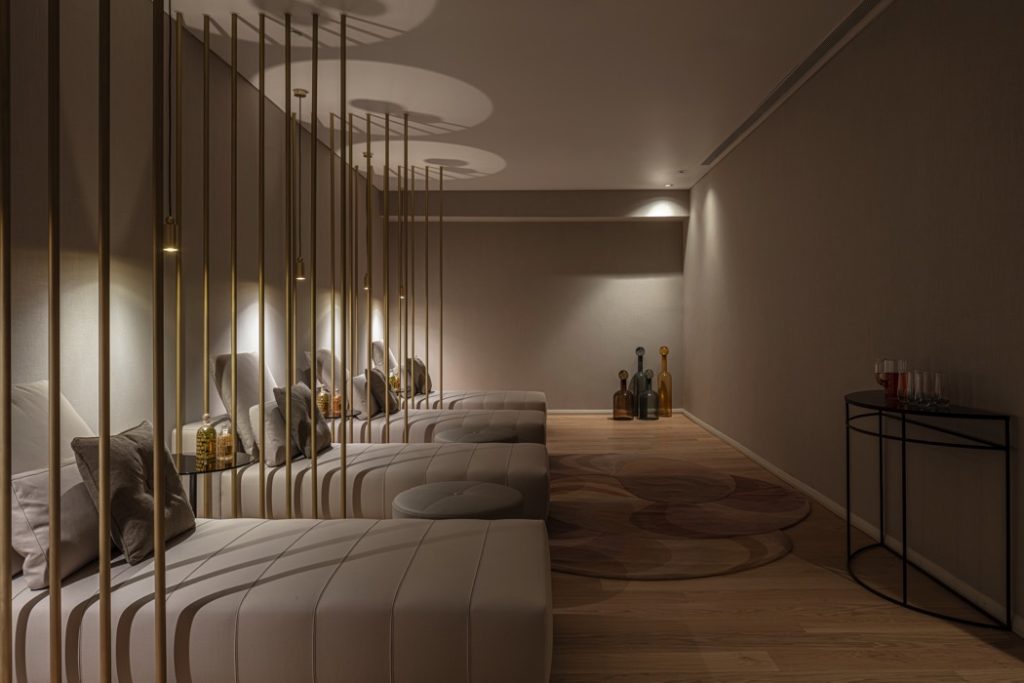
Just as the Radisson Residence houses a fitness centre and swimming pools nestled in the scenic setting of the Dubai Marina, just a few minutes from the beach, and is the result of an all-Italian design – down to the smallest detail – by architect Matteo Nunziati.
In Switzerland, the theme of water is inscribed in the name of the town of Baden. Baths of yesteryear, already in use in Roman times, the baths along the Limmat River have undergone multiple reconstructions. The latest project, curated by Mario Botta, started with the challenge of preserving the ancient Roman ruins before building. The architect was able to imagine and build brick by brick ‘a thermal landscape’ linking the building, the city and nature. Nature is present and is revealed inside in the materials used on the floor and walls, in the colours of terracotta and wood-clad ceilings that embrace guests in a warm, rarefied atmosphere.
Climbing to the summit – on the ridge of the Bürgenberg mountain – we find the new Bürgenstock Hotel, with its high-altitude architecture and contemporary design (part of the legendary Bürgenstock Resort), mirrored in Lake Lucerne and the view stretching as far as the Alps. Its solitary spirit – due in part to the fact that it is reached by funicular – has attracted illustrious guests including Audrey Hepburn and Charlie Chaplin, who have enjoyed its beauty since the Grand Hotel was founded in 1873. Its ‘human scale’ wellness centre offers infinity pools, saunas with lake views, and jacuzzis under the stars for a secret experience involving the five senses.
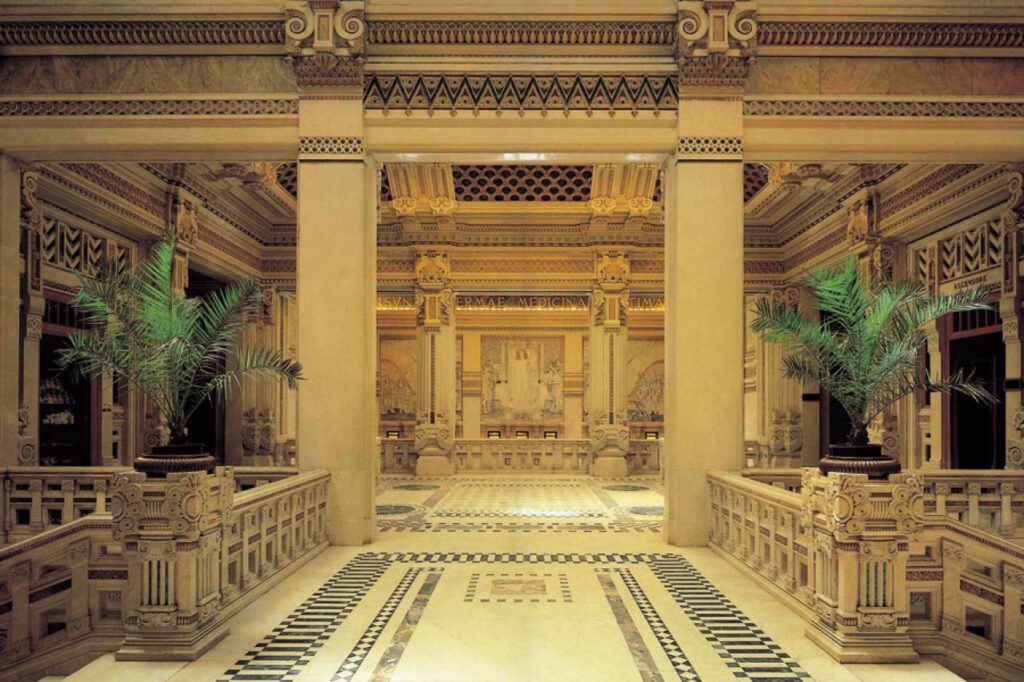
The borderline between Ottoman and Roman spa culture is Budapest. Here, bathing becomes an art form; the abundance of water with no less than 118 springs made it a must-see destination on the Grand Tour.The legendary Gellert Baths date back to 1912, while the healing effects of its ‘effervescent’ water had been known since the Middle Ages. Its roof with its magnificent glass dome surrounded by columns is an icon of spa architecture.
READ ALSO – Acqua di Parma Milan: a sensual architecture
Contemporary with the Széchenyi baths (designed, however, years earlier in the Neo-Baroque style), the Gellert baths innovated by introducing floral motifs and decorations from the book of nature, at the expense of the hitherto dominant colours of chrome and black. Experimentation with geometric and angular shapes, mirrors and reflective tiles are the hallmarks of a unique style.
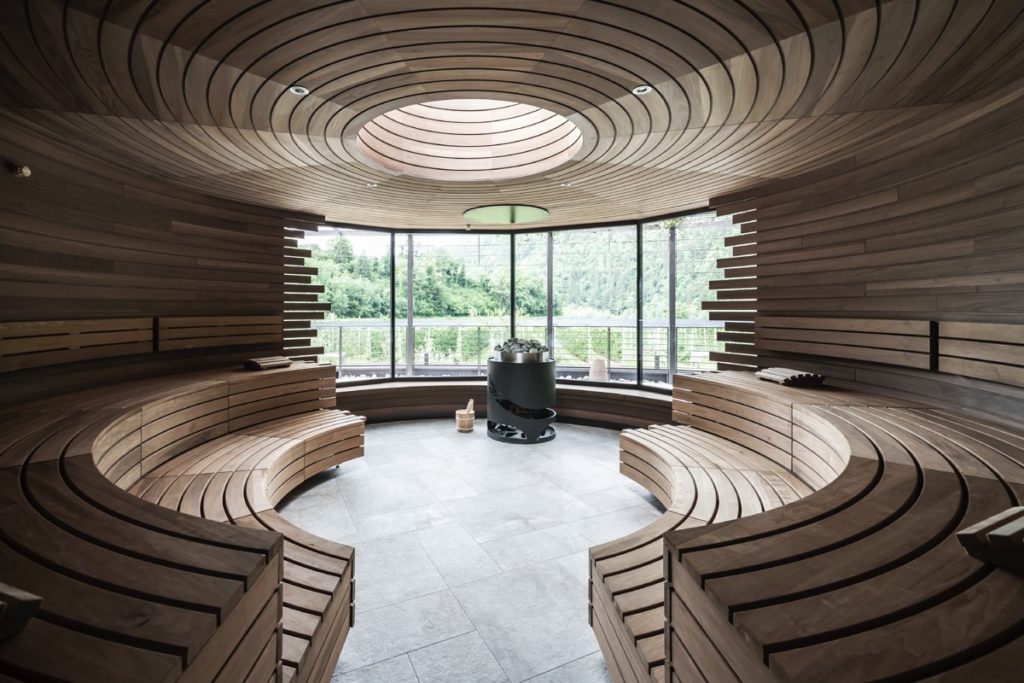
We are at the end of this liquid journey, constantly flowing, ‘panta rei’ according to Heraclitus’ maxim; therefore no one ever dives into the same water. The latest jewel in spa architecture has the evocative name of Sky Lagoon in Iceland. A design that seems to spring from the lying depths of the earth, favouring natural elements, leaving modernity out. A place with a ‘Viking’ atmosphere and nestled between volcanic cliffs and ocean. Wood gives way to construction in high-strength grass mixed with dried earth (Klömbruhleðsla). A bare and essential architecture, a meeting point between earth and sky as shown by the colours that envelop it. Textures, such as precious metals and wood, add warmth and personality, a new dimension of modernity boldly blended into the landscape.

